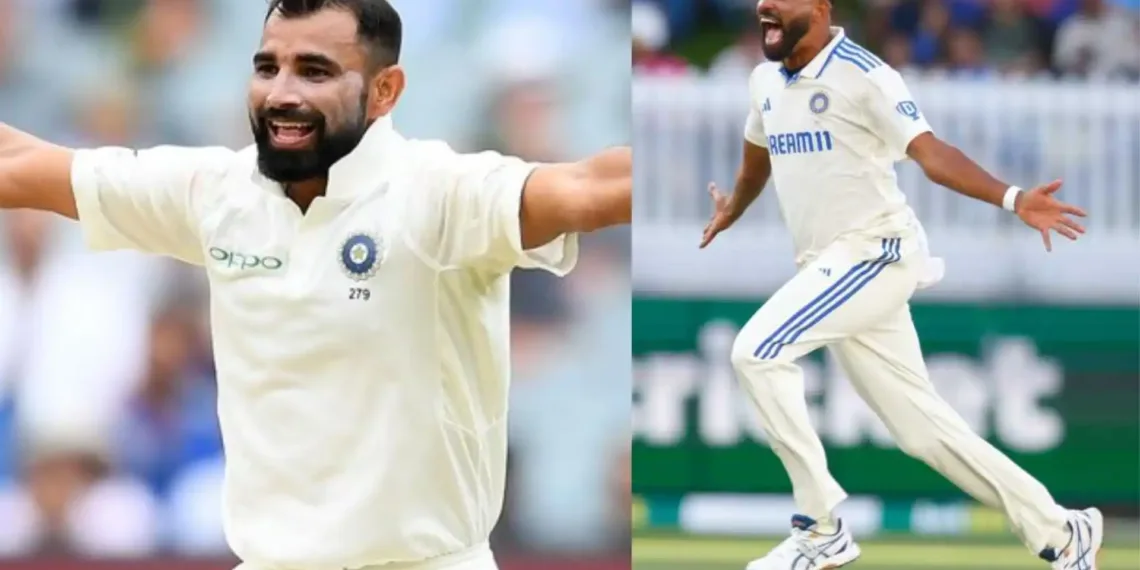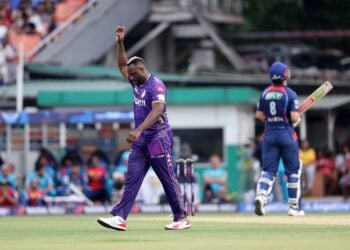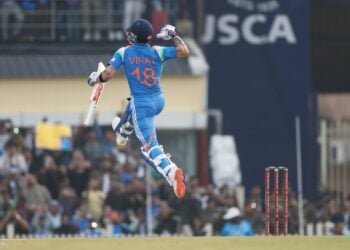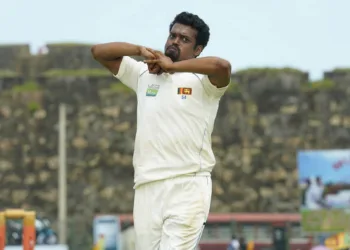With Mohammad Shami controversially omitted from India’s Test squad despite stellar Ranji Trophy performances (15 wickets in two matches), comparisons with past legends intensify. How does Shami’s 64-Test career stack against Indian pace icon Javagal Srinath at the same milestone? The numbers reveal fascinating insights.
Table of Contents
Shami vs Srinath Career Statistics Head-to-Head
| Category | Mohammad Shami | Javagal Srinath |
|---|---|---|
| Tests Played | 64 | 64 |
| Total Wickets | 229 | 232 |
| Bowling Average | 27.71 | 30.46 |
| Five-Wicket Hauls | 6 | 10 |
| Best Figures | 6/56 vs AUS | 8/86 vs PAK |
| Wins Participated | 31 matches | 15 matches |
| Wickets in Wins | 118 @ 20.34 | 64 @ 20.56 |
| SENA Tests | 34 matches | 22 matches |
| SENA Wickets | 123 @ 32.88 | 89 @ 34.31 |
Overall Performance: Shami’s Superior Average
Mohammad Shami’s Dominance: With 229 wickets at 27.71, Shami edges Srinath’s 232 wickets at 30.46. The 2.75-run advantage per dismissal might seem modest, but across 229 wickets, it represents significant value—approximately 630 runs saved.
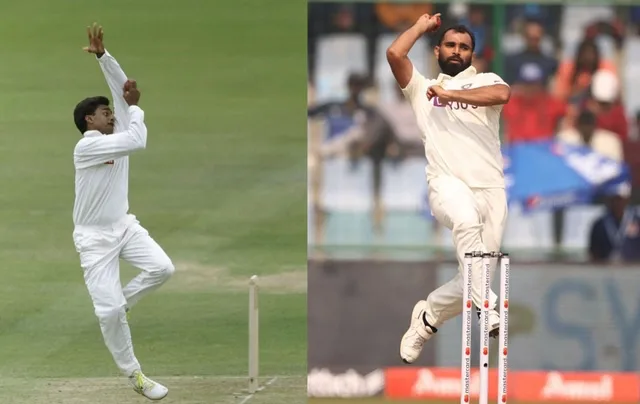
Opposition Breakdown:
- vs South Africa: Shami excels with 48 wickets @ 20.93 (11 Tests) compared to Srinath’s 64 wickets @ 24.48 (13 Tests)
- vs Australia: Shami claims 44 wickets @ 32.09 (12 Tests); Srinath managed 30 @ 42.33 (11 Tests)
- vs England: Shami’s 44 wickets @ 38.29 (15 Tests) shows consistency across formats
Explore more statistical analyses in our Indian cricket legends comparison hub.
Five-Wicket Hauls: Srinath’s Match-Winning Edge
Srinath’s 10 five-fers significantly outpace Shami’s 6, suggesting greater match-defining performances. Srinath’s legendary 8/86 against Pakistan at Eden Gardens (1999) remains iconic in Indian cricket folklore.
However, context matters: India won 31 of Shami’s 64 Tests versus just 15 for Srinath. Modern Indian batting dominance provides Shami fewer opportunities for prolonged bowling spells that generate five-wicket hauls.
Winning Formula: Both Deliver When It Counts
Shami’s Winning Impact: 118 wickets @ 20.34 in 31 wins demonstrates elite performance under pressure. Four five-fers in victories showcase his ability to capitalize when India dominates.
Srinath’s Uphill Battle: Just 64 wickets @ 20.56 in 15 wins reflects the weaker Indian teams of his era. Remarkably, four five-fers came in defeats—highlighting his lone-warrior status carrying attack responsibilities.
Discover winning strategies in our Test cricket tactical analysis.
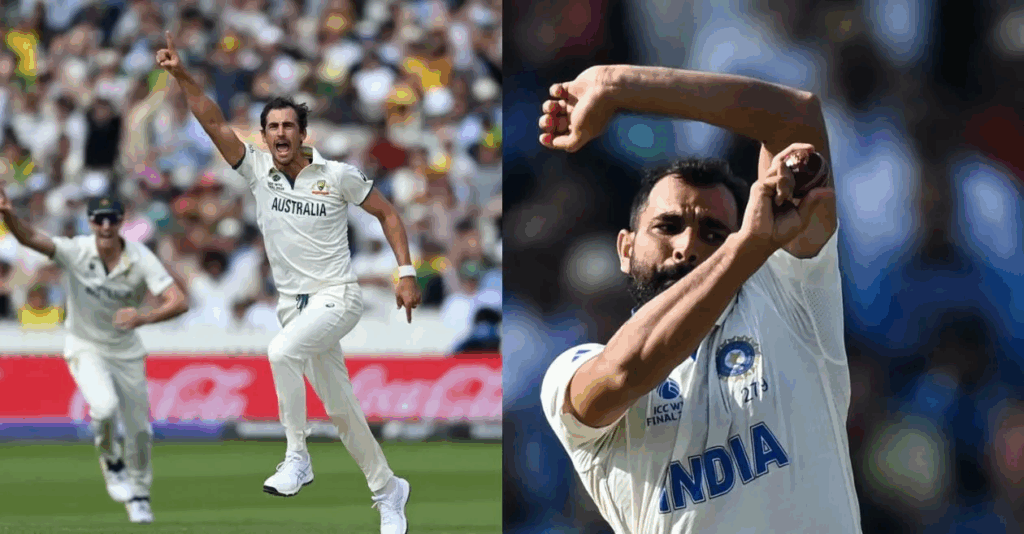
SENA Challenge: Shami’s Volume vs Srinath’s Efficiency
Shami’s Extensive Experience: 34 SENA Tests (123 wickets @ 32.88) shows greater exposure to challenging conditions. His 31 wickets in Australia with two five-fers and 35 in South Africa demonstrate adaptability.
Srinath’s South African Mastery: Despite fewer SENA opportunities (22 Tests), Srinath’s 43 wickets @ 25.27 in South Africa with three five-fers represents specialized excellence. His 34.31 average still compares favorably to Shami’s 32.88 given the era difference.
Learn more about BCCI selection policies and player development.
The Verdict: Era-Adjusted Excellence
While raw numbers slightly favor Shami’s consistency (better average) and match participation (more wins), Srinath’s match-winning five-fers and performances in a weaker team context showcase different excellence dimensions. Both are undeniable legends who carried India’s pace attack through different eras.
For comprehensive cricket analytics, visit our cricket statistics hub.
Frequently Asked Questions
Why does Shami have fewer five-wicket hauls despite similar wicket tallies?
Modern cricket’s shorter Test matches and India’s batting dominance mean fewer opportunities for extended bowling spells. Srinath often bowled 30+ overs per innings carrying India’s attack alone, while Shami shares responsibilities in a stronger pace unit with Bumrah, Siraj, and others. Additionally, subcontinental pitches offering more turn mean spinners claim more five-fers, reducing pace bowler opportunities compared to Srinath’s era.
Does Shami’s better average definitively make him superior to Srinath?
Not necessarily. Cricket statistics require contextual analysis. Shami benefits from superior fielding, DRS technology, modern pitch preparation, and stronger batting support reducing pressure. Srinath faced reverse swing challenges without technology assistance and carried weaker teams. Adjusted for era, both are world-class performers. Shami’s superior average suggests technical refinement, but Srinath’s match-winning performances under adversity demonstrate equal greatness through different metrics.

